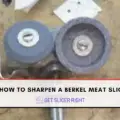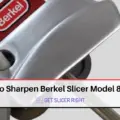Short answer: To tighten the belt on a Berkel meat slicer, locate the belt tension adjustment mechanism and adjust it accordingly to achieve the desired tightness.
Ensuring that the belt on your Berkel meat slicer is properly tightened is essential for optimal performance and consistent slicing results. Over time, the belt may loosen, leading to reduced efficiency and potential slipping during operation. However, with a few simple steps, you can easily tighten the belt and restore your meat slicer to its full functionality.
How To Tighten The Belt On The Berkel Meat Slicer?
To tighten the belt on a Berkel meat slicer, follow these steps:
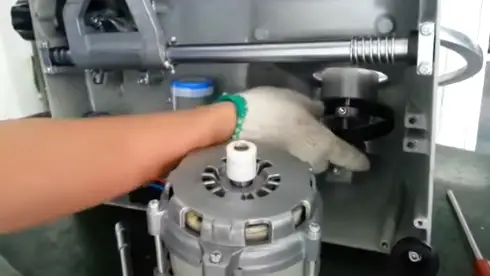
Step 1: Locate the belt tension adjustment mechanism: Depending on the model, the belt tension adjustment mechanism may be found on the side or underneath the slicer. Refer to the user manual for the specific location.
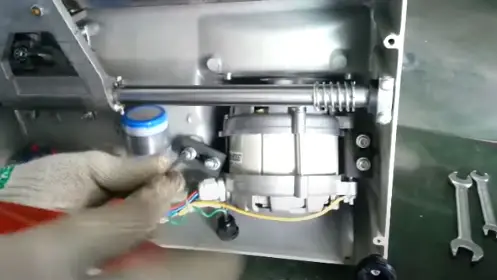
Step 2: Identify the belt tension adjustment screw: Once you have located the belt tension adjustment mechanism, look for a screw or knob that can be turned to tighten or loosen the belt.
Step 3: Turn the adjustment screw: Using a screwdriver or the provided tool, turn the adjustment screw in the appropriate direction to tighten the belt. Usually, turning the screw clockwise tightens the belt, while turning it counterclockwise loosens it.
Step 4: Check the belt tension: After turning the adjustment screw, check the tension of the belt by gently pressing it with your finger. It should have a firm and consistent tension without feeling too loose or too tight.
Step 5: Test the slicer: Once you have tightened the belt, turn on the meat slicer and observe its operation. Ensure that the belt is running smoothly without slipping or causing any issues.
Why Does The Belt On Berkel Meat Slicer Loosen?
The belt on a Berkel meat slicer may loosen over time due to various factors, including:
Normal wear and tear: Continuous use of the meat slicer can cause the belt to naturally stretch and loosen over time. This is a normal occurrence and may require periodic adjustments.
Improper tensioning: If the belt was not initially tensioned properly during the installation or maintenance process, it may become loose sooner. Proper tensioning is crucial to ensure the belt stays tight during operation.
Belt stretching: Over time, the belt material may stretch, leading to a looser fit. This can occur due to exposure to heat, moisture, or other environmental factors.
Mechanical issues: There could be underlying mechanical issues with the belt tensioning mechanism or components of the slicer, such as worn-out or damaged parts. These issues can affect the belt’s tension and cause it to loosen.
Inconsistent maintenance: Inadequate or inconsistent maintenance, such as neglecting to check and adjust the belt tension regularly, can contribute to belt loosening.
FAQs
Why is my meat slicer not working?
There could be several reasons why your meat slicer is not working. It could be due to a power issue, such as a tripped circuit breaker or a faulty power cord. Another possibility is a malfunctioning motor, a loose or broken connection, or a worn-out blade. It is recommended to check the power supply, inspect the motor and connections, and ensure the blade is properly installed before seeking professional assistance if the issue persists.
How would you adjust the blade on a meat slicer?
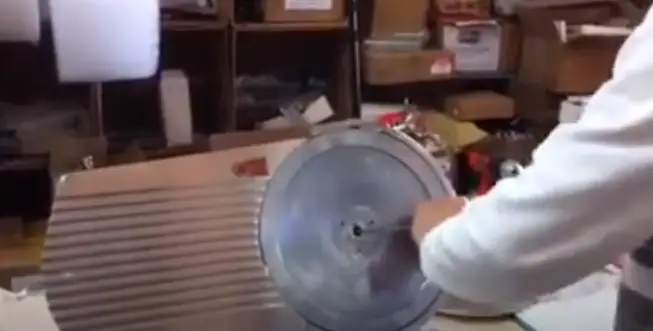
To adjust the blade on a meat slicer, refer to the user manual for specific instructions for your model. In general, there may be an adjustment knob or lever that allows you to control the blade’s position. Turn the knob or move the lever to adjust the blade’s height or tilt, ensuring it aligns with the desired slicing thickness. It is essential to follow the manufacturer’s guidelines to ensure safe and proper adjustment.
Why is my slicer taking so long?
Several factors can contribute to a slicer taking longer than usual to slice. One possibility is a dull blade, which can slow down the slicing process. Another factor could be insufficient pressure applied while slicing, causing the blade to encounter more resistance. It is also important to ensure the product being sliced is properly positioned and secured for efficient cutting. Checking and addressing these factors can help improve the slicer’s speed and performance.
What is the risk of a meat slicer?
Meat slicers pose potential risks due to their sharp blades and high-speed operation. Improper use or lack of safety precautions can lead to accidental cuts or injuries. The rotating blade can cause serious harm if fingers or hands come into contact with it. It is crucial to follow proper safety guidelines, use protective equipment like cut-resistant gloves, and keep hands away from the blade during operation. Regular maintenance and ensuring the slicer is in good working condition are also important to minimize risks.
Conclusion
Maintaining the proper tension of the belt on your Berkel meat slicer is crucial for optimal performance and consistent slicing results. By following the steps properly, you can easily tighten the belt and ensure that it remains securely in place during operation. Regularly checking and adjusting the belt tension will help prevent slipping, improve efficiency, and prolong the lifespan of your meat slicer. Remember to consult the user manual or seek professional assistance for specific instructions tailored to your Berkel meat slicer model. With a properly tightened belt, you can confidently continue slicing with precision and efficiency in your culinary endeavors.
Key Takeaways:
- Regular belt adjustment is necessary for optimal slicer performance.
- Always observe safety measures during maintenance tasks.
- Regular checks and adjustments can prolong the life of your slicer’s belt.
- Know how to handle common issues like a slipping or stretched belt.
- The belt tension should be checked regularly to ensure it’s not too tight or too loose.

John Hebdon is a food enthusiast, passionate chef, and author of various articles and blog posts related to food and cooking. With a deep love for all things culinary, John’s blog serves as a platform to share his extensive kitchen experiences with a broader audience.
In addition to his culinary expertise, John has a flair for writing and a natural ability to share his passion for food with others. His articles and blog posts are informative, engaging, and packed with practical tips for readers of all skill levels.
As a food enthusiast and writer, John is always on the lookout for new and exciting culinary experiences. Whether it’s trying out a new restaurant, experimenting with a new recipe, or simply sharing a favorite dish with friends and family, John is always eager to explore and share the world of food with others.



